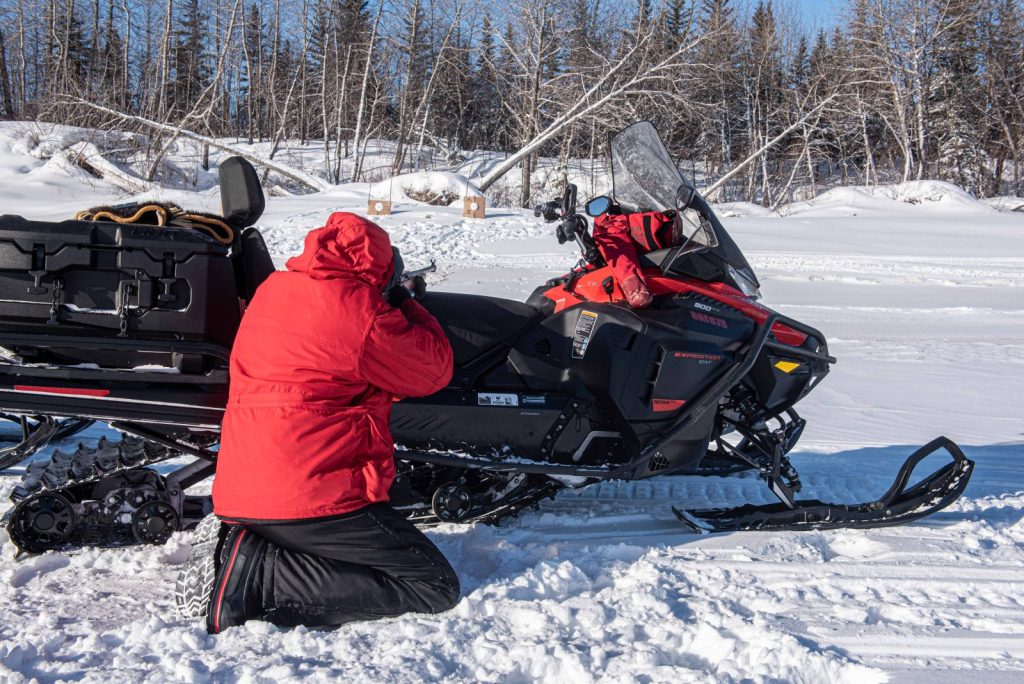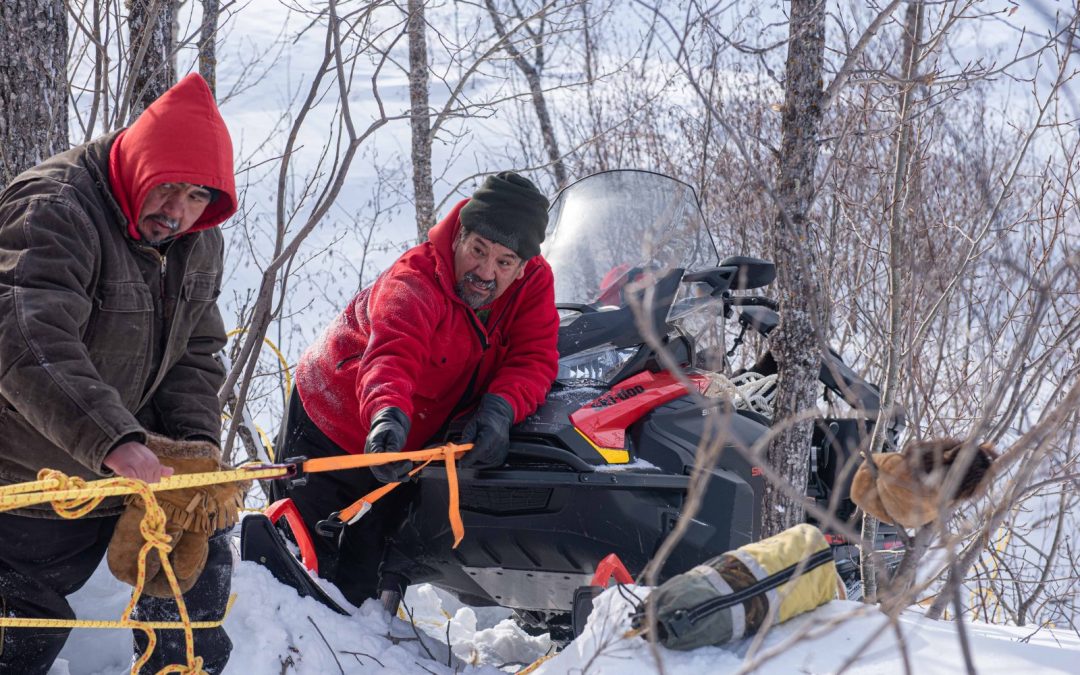by Ian Coutts
For the members of the 3rd Canadian Ranger Patrol Group (3 CRPG), the return this year of Exercise Mobile Ranger was a welcome chance to refresh their skills, reforge old connections, and reach out to new partners.
Held over February 21-28, Mobile Ranger is supposed to be an annual exercise, but this was the first time since 2019 that the Canadian Rangers have been able to carry it out. The 2020 version was cancelled due to Covid-19 and, in the years since then, 3 CRPG members have been kept operationally busy helping their remote home communities of Northern Ontario cope with the effects of the pandemic.
Now, finally, there was a chance to step back from what had been a busy operational tempo and do some work on fundamentals.
Canadians in the south might puzzle about such exercises in the depths of winter, but the cold weather makes it easier to move about a region where there are few roads and travel by truck and snow machine is faster over frozen lakes and rivers. And working in extreme cold is one of the Ranger’s specialties.
The Canadian Rangers’ tasks during the exercise included establishing winter camps, navigating overland and along ice roads in austere conditions, and practicing wilderness first-aid and ice rescue techniques, explained Captain Camilo Oleo-Ortega, 3CRPG’s public affairs representative.
Members of A company gathered at two locations, the Harricana River, east of the region covered by the Moose Factory Canadian Ranger Patrol, and north of the Nibinamil Canadian Ranger Patrol region at a place known as the Breathing Grounds.
Members of B company met in the vicinity of Kitchenuhmaykoosib Inninuwug First Nation, not far, by northern standards from the Manitoba border. The exercise involved 54 Rangers from 3 CRPG, five from 2 CRPG in Quebec, 18 support staff and 19 “green” soldiers, Regular and Reserve members from 4th Canadian Division. These deserving soldiers, in the words of Major John McNeil, the officer commanding 3 CRPG’s A company, were given the opportunity to train with the Rangers to “pick up various survival skills.”

For Canadian Ranger Gilbert Spence, from Atawpaistat, joining the exercise meant a 110-kilometre trip by truck on the ice road from Moose Factory First Nation, and then a three-hour snowmobile ride over the frozen James Bay to the exercise location, where he was delighted to find that their accommodation would be a wilderness lodge on the Harricana River. In non-Ranger life, Spence is a foreman at the Attawapiskat airport, and he welcomed the chance, as he put it, “to get out on the land.”
As well as the more formal training during the week-long exercise, Spence and his fellow Rangers had a chance to compete in a Ranger Challenge, where they worked in teams to show their skills at cold water rescue, freeing a trapped snow machine using block and tackle, and at shooting and ice fishing.
Participants in B company’s portion of Mobile Ranger undertook a survival challenge. They were dropped off in groups of four on islands in frozen Big Trout Lake with orders to “make a shelter using an emergency reflecting blanket, pine boughs and snow,” explained Master Bombardier Nick Speer-Lapointe, a Reservist from Sault Ste Marie, and then spend the night in it.
In addition to uniting 3 CRPG’s scattered patrols for the first time in a few years, Ex Mobile Ranger gave them a chance to meet with colleagues they don’t normally see. “My company had the opportunity to train with Rangers from Quebec,” said McNeil. Working together at a location at the mouth of the Harricana River on James Bay, they constructed a bush airstrip. It was, he explained, a chance to learn how the Quebec Rangers did things and to exchange “best practices. They came to us this year and maybe in the future we’ll go to them.”
While working with the Rangers is a learning opportunity for members of the Army, Rangers gain almost as much. “For the younger Rangers, it’s a thrilling opportunity” to see what it is that the Army does,” said McNeil. “Even the older ones feel honoured to pass on their skills.”
Corporal Roland Leaman, a member of the 3rd Battalion, The Royal Canadian Regiment, jumped at the chance to join the exercise, an opportunity that took him from Petawawa to Borden, to Timmins, to Smooth Rock Falls, and then north along the ice road. “It was something completely out of my wheelhouse,” he said of his time with the Canadian Rangers. “They are dedicated people. They know the land.”
As a northerner himself (though not that far north), Speer-Lapointe said Army members “know they exist,” but exactly what they do was new to him and very educational. Offered the chance to work with them again, “I would absolutely go back up,” he said.

